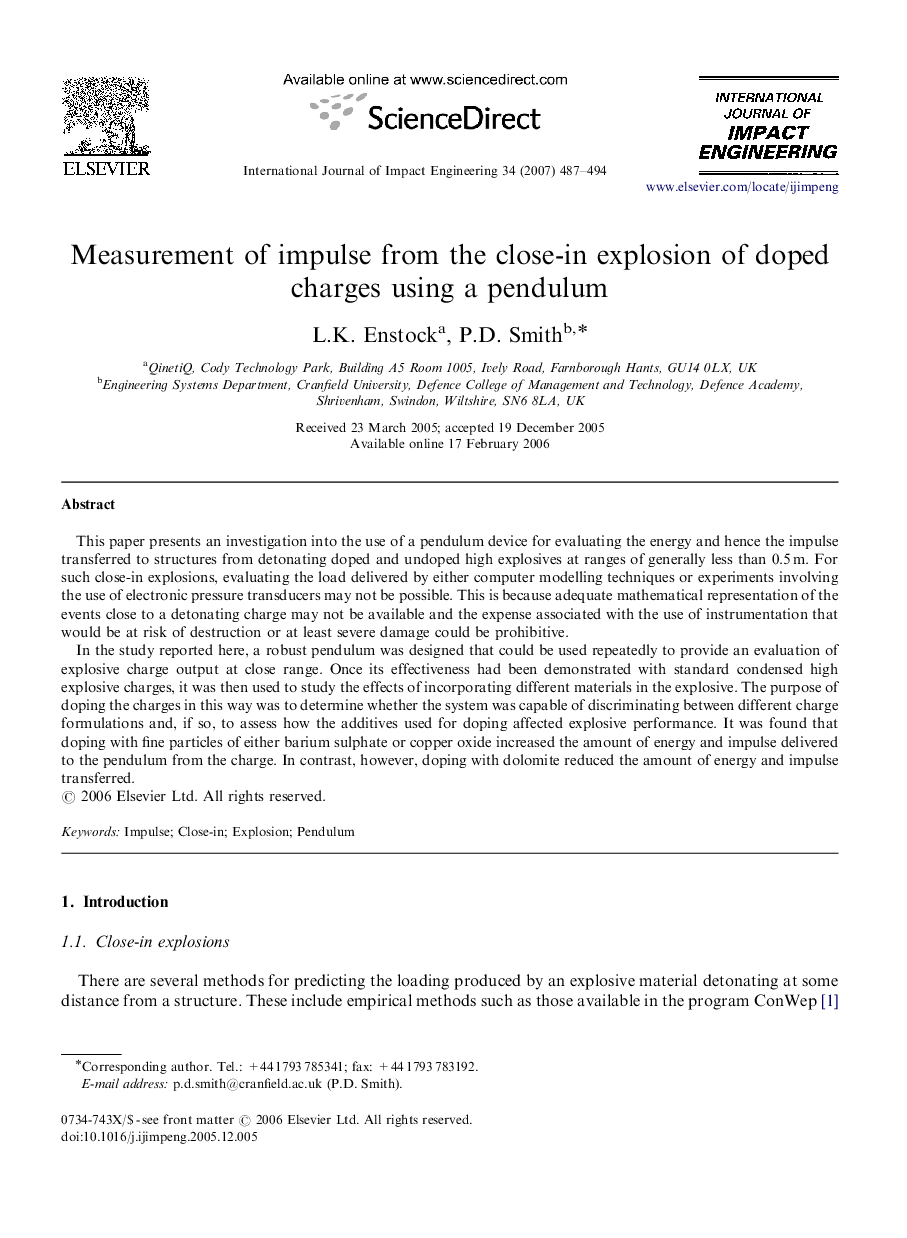| Article ID | Journal | Published Year | Pages | File Type |
|---|---|---|---|---|
| 783824 | International Journal of Impact Engineering | 2007 | 8 Pages |
This paper presents an investigation into the use of a pendulum device for evaluating the energy and hence the impulse transferred to structures from detonating doped and undoped high explosives at ranges of generally less than 0.5 m. For such close-in explosions, evaluating the load delivered by either computer modelling techniques or experiments involving the use of electronic pressure transducers may not be possible. This is because adequate mathematical representation of the events close to a detonating charge may not be available and the expense associated with the use of instrumentation that would be at risk of destruction or at least severe damage could be prohibitive.In the study reported here, a robust pendulum was designed that could be used repeatedly to provide an evaluation of explosive charge output at close range. Once its effectiveness had been demonstrated with standard condensed high explosive charges, it was then used to study the effects of incorporating different materials in the explosive. The purpose of doping the charges in this way was to determine whether the system was capable of discriminating between different charge formulations and, if so, to assess how the additives used for doping affected explosive performance. It was found that doping with fine particles of either barium sulphate or copper oxide increased the amount of energy and impulse delivered to the pendulum from the charge. In contrast, however, doping with dolomite reduced the amount of energy and impulse transferred.
